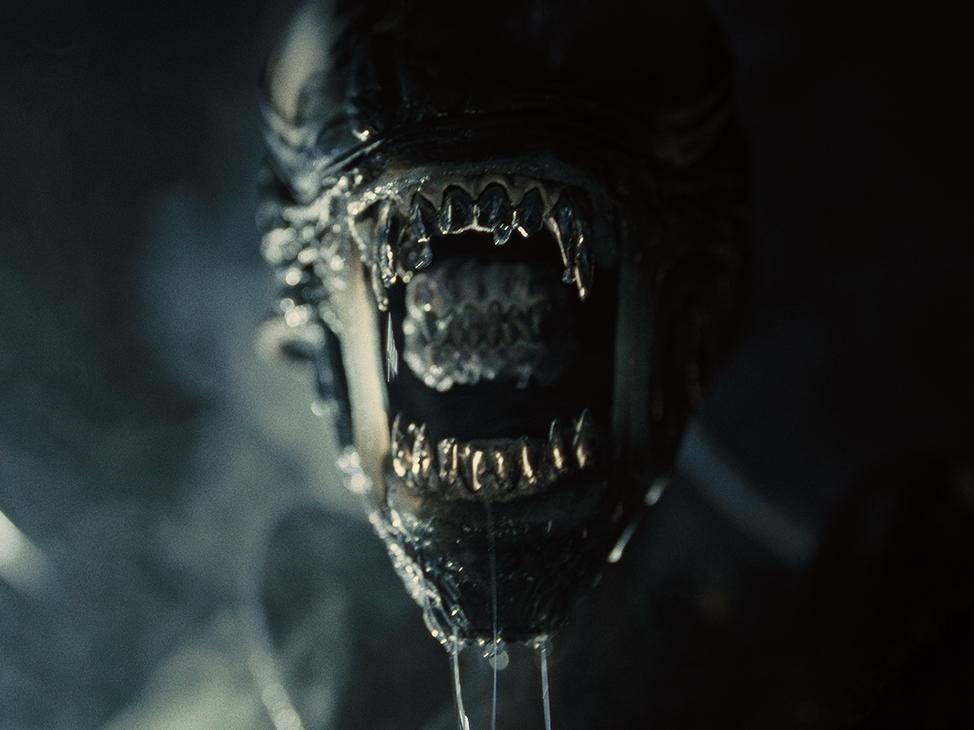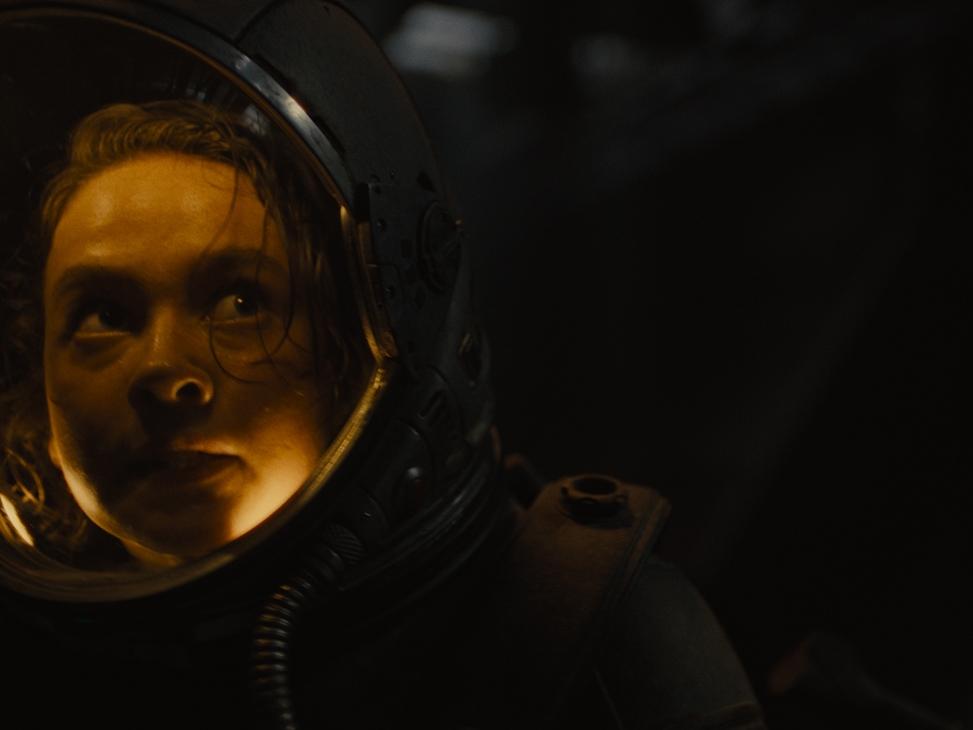Section Branding
Header Content
'Alien: Romulus' is another franchise movie that brings more nostalgia than novelty
Primary Content
If you’ve gone to the movies lately, you might have noticed — or even purchased — one of those novelty popcorn buckets promoting the year’s big blockbusters. Maybe you dug into the gaping maw of a Dune: Part Two sand worm — or, more recently, into the hollowed-out head of Deadpool or Wolverine.
Now, there are at least two popcorn-bucket models promoting the new movie Alien: Romulus. One is shaped like the head of a Xenomorph, that most terrifying of horror-movie demons, though I suspect without the drooling retractable tongue. Another bucket comes affixed with a Facehugger, a skittering critter that’s famously fond of attaching itself to a human’s head and laying an egg in their throat.
These concession-stand gimmicks may be new, but the iconography of Alien: Romulus could hardly be more familiar. That’s no surprise; these monsters, brilliantly conceived decades ago by the Swiss artist H.R. Giger, have kept this series alive. In recent years Ridley Scott, the director of the unimprovable 1979 Alien, has tried to push the franchise in a more philosophical direction, in movies like Prometheus and Alien: Covenant. By contrast, Alien: Romulus, which was directed and co-written by the Uruguayan filmmaker Fede Alvarez, has no such weighty ambitions. It’s an efficient and reasonably entertaining thriller that, like a lot of franchise movies nowadays, traffics more in nostalgia than novelty.
Álvarez does set his sights somewhat high; he means to take us back to the franchise’s glory days. The story, set in the year 2142, is sandwiched between the events of the first Alien and James Cameron’s hugely entertaining 1986 sequel, Aliens. As in those films, starring the incomparable Sigourney Weaver, there’s a tough-minded female protagonist. Her name is Rain, and she’s played by Cailee Spaeny, the versatile young actor from Priscilla and Civil War. There’s also a friendly, not entirely reliable android sidekick — Andy, played by the English actor David Jonsson. We’re in a period that you might call late late capitalism, where villainous corporations rule the day and Rain, like most people her age, is part of a heavily exploited labor class, working off debts that will never be repaid.
And so when she and Andy hear of a possible way out, they seize the opportunity along with a few friends — never mind that it means heading up into space and boarding a large rustbucket ship that’s not quite so abandoned as it appears. The ship has two sections, named Remus and Romulus, which partly explains the Roman mythology-referencing title. As for what lurks aboard the ship, Álvarez knows there’s no point in building mystery or suspense, and he unleashes his army of Facehuggers and Xenomorphs almost immediately. His human characters, however, do intend to put up a fight.
Álvarez has a knack for rebooting horror properties, having made his debut with a fresh 2013 spin on Evil Dead. He followed that with the walking-on-eggshells thriller Don’t Breathe, about a group of young burglars trying to rob a blind homeowner. There are actually some amusing plot similarities between that movie and Alien: Romulus, right down to a third-act twist that pushes things into see-it-to-believe-it body-horror territory.
Álvarez is a strong director of action, and he riffs inventively on classic Alien beats. The Xenomorphs, as usual, have corrosive acid for blood — a detail that the movie exploits ingeniously in a suspenseful, gravity-defying set-piece. And there’s at least one memorable moment that reminds us that the Xenomorphs, with their phallic heads and goopy secretions, are among the most psychosexual of cinematic nightmares.
In the end, though, Álvarez’s command of craft only gets him so far. The problem isn’t just that the characters, apart from Rain and Andy, are pretty bland monster fodder. It’s that while the director seems content to update the Alien movies — with young, fresh faces and state-of-the-art technology — he has no apparent idea how to push them forward. His boldest and least successful gambit is to resurrect a key figure from an earlier film — a visual-effects coup that tries to honor the series’ roots, but feels more like a desecration. I’ll never pass up an Alien movie, but I do hope the next one has something more than elaborate fan service in mind. Dwelling too obsessively on the past is no way to guarantee a franchise’s future.


